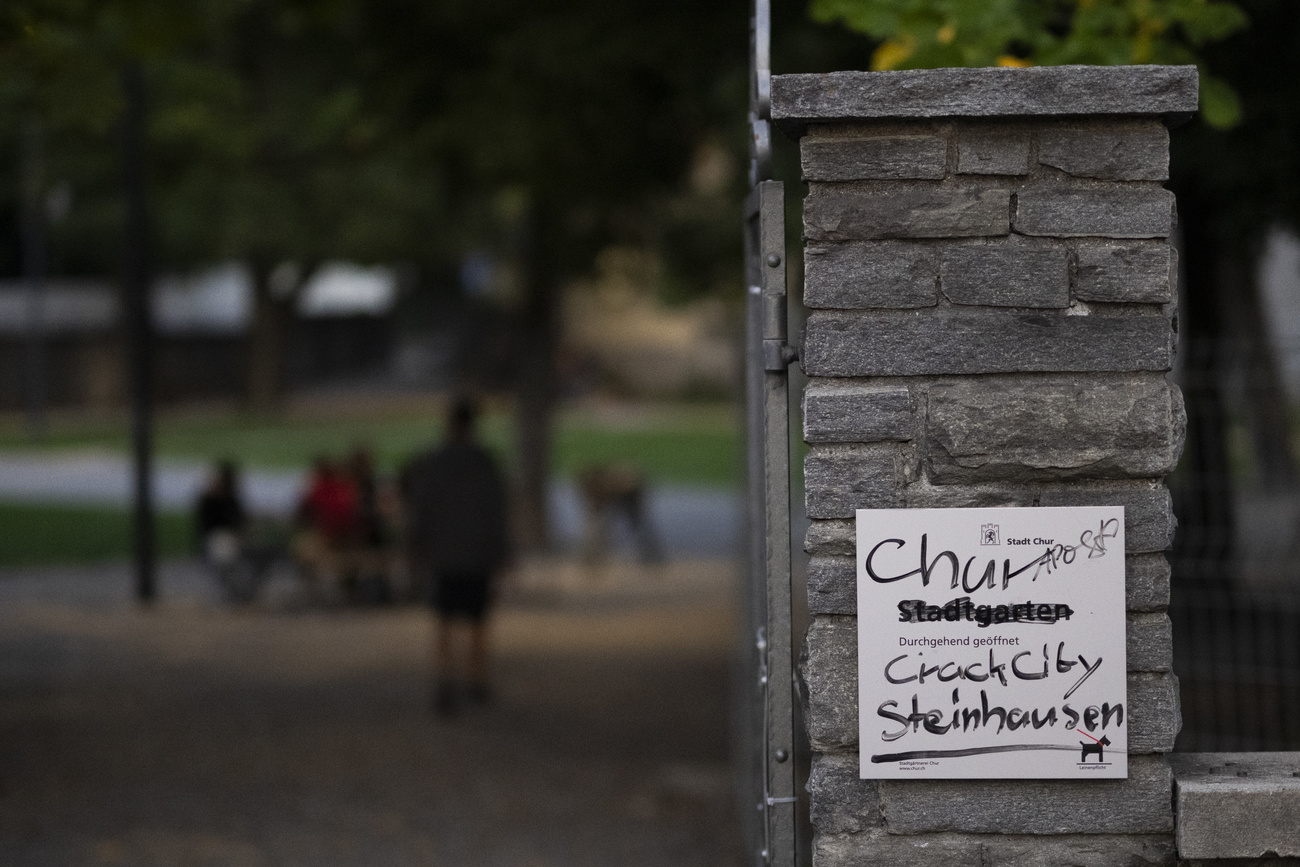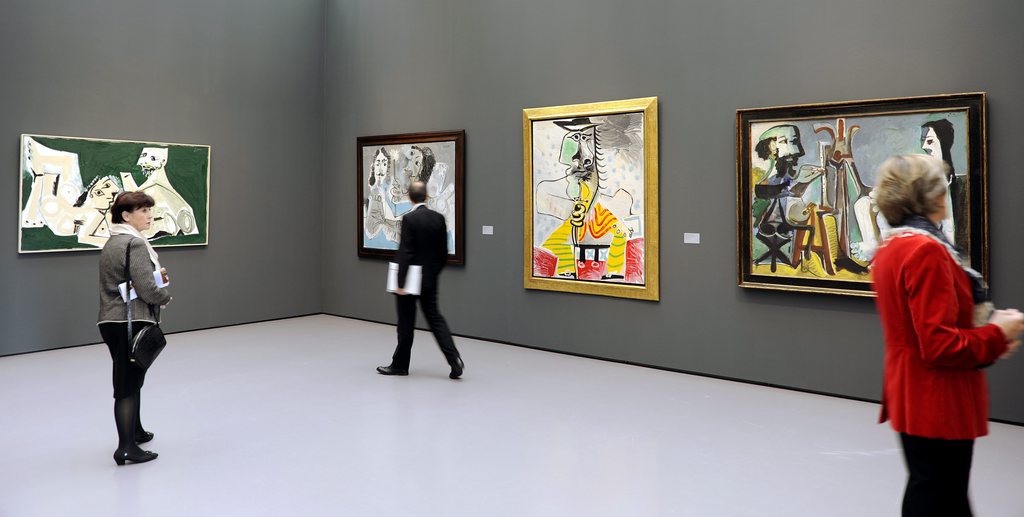Group unveils “early” Mona Lisa in Geneva

A Swiss-based foundation has unveiled in Geneva what it claims to be an earlier version of Leonardo da Vinci’s Mona Lisa. The group says modern techniques help support their findings. But some Da Vinci experts remain sceptical.
“People will dismiss it as a copy, but we absolutely refute that allegation,” Irish-born art historian Stanley Feldman, a member of the Zurich-based Mona Lisa Foundation, told a press conference at the five-star Beau-Rivage hotel on Thursday.
The foundation contends that their painting, presented to the press for the first time, is a younger portrayal of Da Vinci’s muse – in her early 20s, a decade younger than the version in the Louvre.
In an hour-and-a-half presentation and video, foundation members and art experts outlined some of the “interlocking proof” based on regression tests, mathematical comparisons and historical and archival records gathered over 35 years that they say proves the authenticity of their Da Vinci painting, known as the “Isleworth Mona Lisa”.
“We have investigated this painting from every relevant angle and the accumulated information all points to it being an earlier version of the Giaconda in the Louvre,” said Feldman, principal author of a foundation book entitled “Mona Lisa: Leonardo’s Earlier Version”, released on Thursday.
Italian Leonardo specialist Alessandro Vezzosi and US-based expert Carlo Pedretti have given their cautious backing to the “two portraits” thesis.
Vezzosi, director of the Leonardo museum in the artist’s home town of Vinci in central Italy, urged critics to keep an open mind.
“The ‘Isleworth Mona Lisa’ is an important work of art deserving respect and strong consideration, as well as scientific, historic and artistic debate among specialists rather than purely media interest,” he told journalists.
The foundation said the work was not for sale but indicated that they may take it on an exhibition tour to other countries in the coming months.
Found in England
The painting is slightly larger, was painted on canvas and has brighter colours than the famed Louvre Museum masterpiece painted on wood. The posture, folded hand positions, faces, expressions and clothing are similar, while the landscape in the background is different.
The “younger version”, which has been held in a Swiss bank vault for the past 40 years, is not new to the art world, however.
It was discovered in 1913 by British art collector Hugh Blaker in a manor house in the west of England where it had hung for a century unnoticed. How it got there is unknown.
Blaker took it to his home in the London suburb of Isleworth. On his death in 1936, it was bought by American collector Henry Pulitzer, who placed it in a Swiss bank but wrote a book about it, published in 1972.
When Pulitzer died in 1979, it passed to his Swiss business partner, and on her death in 2010, it was bought by an international consortium, its current owners.
“Probably a copy
The foundation says research is continuing on the painting and has invited experts and sceptics to come and examine it for themselves.
Oxford University professor Martin Kemp, a world-recognised authority on Da Vinci, argued in a recent Sunday Times newspaper that the Geneva portrait was probably a copy of the Paris version by an unknown painter who simply chose to make the subject younger.
“So much is wrong,” said Kemp, pointing to the fact that the foundation’s portrait is painted on canvas and not on wood, the artist’s preferred medium.
He told the Associated Press news agency that “the reliable primary evidence provides no basis for thinking that there was ‘an earlier’ portrait of Lisa del Giocondo” – referring to the subject of the Mona Lisa.
Subtle details missing
Kemp questioned the “debatable interpretations” of source material about the Isleworth painting, and said that scientific analysis cannot categorically deny that Da Vinci didn’t paint it. However, he added: “The infrared reflectography and X-ray points very strongly to it not being by Leonardo.”
“The Isleworth Mona Lisa mis-translates subtle details of the original, including the sitter’s veil, her hair, the translucent layer of her dress, the structure of the hands,” Kemp stated. “The landscape is devoid of atmospheric subtlety. The head, like all other copies, does not capture the profound elusiveness of the original.”
Jan Blanc, an art history professor from Geneva University, was also dubious: “The Mona Lisa face seems quite different from those painted by Da Vinci at the end of his career…the contours are harder, the shading is less progressive and shape more oval…these seem to point to the work of another artist.”
He was also doubtful that scientific analysis could reveal “absolute proofs” and said the expert pool used to analyse the painting was weak.
Bruno Mottin, the head conservator at the Centre de Recherche et de Restauration des Musées de France based at the Louvre declined to comment but pointed to a recent editorial in the online Art Tribune magazine criticizing the recent spate of so-called scoops.
“It’s incredible that the newspapers get taken in each time,” wrote editor Didier Rykner. “Yet the scenario is the same: a few ‘specialists’, often self-proclaimed, if they are not the owners, claim they have identified a new Da Vinci, Caravaggio or Van Gogh. Ninety-nine times out of 100 their discovery is pure fantasy as it’s never been through the usual publication process in a scientific review or been discussed by real specialists…the likelihood is this one is an old copy.”
Leonardo da Vinci was born in Vinci, near Florence in 1452 and died in Amboise, France in 1519.
He was the illegitimate son of a wealthy lawyer and a peasant woman.
He had an astonishing range of talents, including as a painter and sculptor, and also as inventor, engineer and architect.
He was apprenticed to a Florentine artist in 1466, and spent the years 1482 to 1499 in Milan.
He returned to Florence, after a brief period in Venice, in 1500.
In 1502 and 1503 he travelled round Italy with his patron, Cesare Borgia, returning afterwards to Florence, where he stayed until 1506.
He spent the following years in a number of different Italian cities.
In 1516 he entered the service of Francis I of France, and moved to Amboise, where the king had a residence.
The Mona Lisa – also known as La Gioconda – now hanging in the Louvre in Paris is probably Leonardo’s best known painting.
It is thought to be a portrait of Lisa Gherardini, commissioned by her husband Francesco del Giocondo.
There is some uncertainty about its precise dating.
It is believed to have been started between 1503 and 1506, but it is not known when it was completed.
It ended up in France having been purchased by Francis I.

In compliance with the JTI standards
More: SWI swissinfo.ch certified by the Journalism Trust Initiative















You can find an overview of ongoing debates with our journalists here . Please join us!
If you want to start a conversation about a topic raised in this article or want to report factual errors, email us at english@swissinfo.ch.